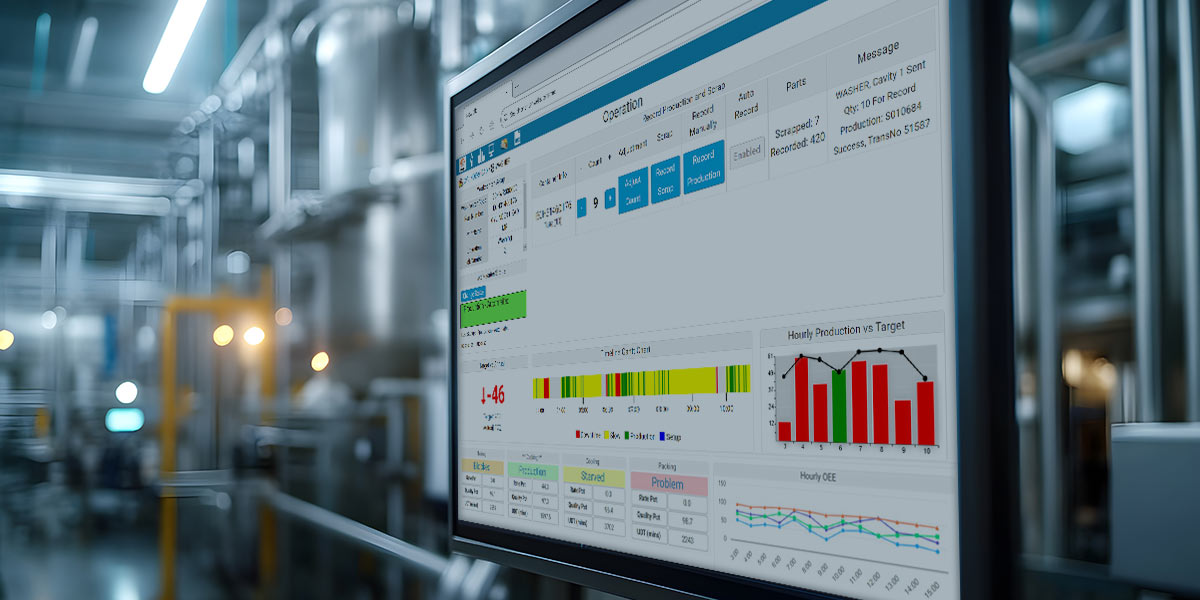
Cybertrol’s Digital Transformation Series: Part 2 MES Overview & Value
Building upon our initial assessment in Part 1, we now turn our focus to Manufacturing Execution Systems (MES) and their pivotal role in bridging the gap between enterprise-level planning and plant floor execution. In this second installment, we explore how MES solutions can enhance operational efficiency, ensure quality compliance, and provide real-time visibility into your manufacturing processes.
Why MES Is the Next Logical Step
During the assessment phase, we often uncover the same core needs:
- Lack of real-time data
- Inconsistent production records
- Limited traceability
- Manual processes that slow down operations and reporting
MES addresses all of these by collecting, managing, and delivering information in real-time where it’s needed most. When properly configured, MES becomes a powerful enabler of transparency, accountability, and consistency.
Key Functions of MES
MES isn’t one-size-fits-all. Our team helps identify which functions will deliver the most value based on your unique gaps and business goals. That said, here are some foundational components we often implement:
Production Scheduling
MES enables both finite and infinite scheduling—providing visibility into real-world resource constraints like equipment uptime, maintenance events, labor availability, and inventory. The result is a dynamic schedule that can adapt in real time.
Production Execution
MES brings order to the chaos of the plant floor. It provides operators with clear instructions on what to produce and how to do it. It also collects data as production unfolds: materials used, process steps completed, personnel involved, and more. This generates the traceability manufacturers need without adding extra burden to operators.
Quality Management
Quality checksheets and inspection points are embedded directly into the workflow. Operators are prompted to record key measurements or observations before continuing. This ensures critical quality parameters are met, and when they’re not, MES can trigger alerts or even halt production.
Inventory and Material Tracking
With MES, materials are tracked at every point in the process. This includes raw material usage, intermediate product creation, and finished goods. Real-time visibility into inventory helps prevent shortages, eliminate overproduction, and improve accuracy.
Document Management
Both pre- and post-production documents are managed within MES. Work instructions, specifications, and quality criteria (GMP/HACCP) are linked to each order. After production, MES compiles reports and audit records based on what was captured in real time.
Performance Analysis
MES provides meaningful KPIs such as OEE, yield, downtime, and rework—all pulled automatically from control systems or operator inputs. This allows for proactive maintenance planning, targeted training, and process improvement.  Key functions of Cybertrol Engineering MES Solutions
Key functions of Cybertrol Engineering MES Solutions
Making MES Work for You
One common misconception is that MES must be fully implemented across all functions from day one. Not only is that unrealistic, but it also isn’t necessary. Cybertrol guides you through prioritizing functions based on:
- Existing infrastructure and automation
- Workforce readiness
- Budget and timeline constraints
- Plant-specific or product-specific requirements
For some manufacturers, automating scheduling and quality checks might deliver the most immediate ROI. Others may benefit more from document control or inventory traceability. We help build a phased roadmap based on what will move the needle first—and then scale.
Integration Is Everything
MES alone doesn’t create value unless it talks to your other systems. That’s why integration is a core part of our MES implementation strategy. We ensure MES integrates with:
- ERP, CMMS, WMS (to align planning, maintenance, and execution)
- PLCs, HMIs, and SCADA systems (to gather real-time process data)
- Quality or regulatory databases (for audit reporting)
In some cases, this requires infrastructure upgrades or data concentrators to bridge older equipment with modern software. Cybertrol’s control and network expertise makes this process smooth, scalable, and secure.
The Cybertrol Difference
What sets us apart is how we bring MES to life. It’s not just about deploying software—it’s about engineering a system that truly supports how your plant runs. Our extensive experience in plantwide automation and network infrastructure means we can integrate MES solutions that work seamlessly in real manufacturing environments.
We don’t just deliver software. We deliver:
- Improved operator experience
- Cleaner data for analysis
- Stronger connections between people, equipment, and decisions
Looking Ahead
Once the right MES functions are in place, manufacturers gain the confidence to move faster, reduce waste, and make smarter decisions. But there’s more to the story.
In Part 3 of this series, we’ll explore the MES functionalities that drive real value—digging into the specific capabilities manufacturers can prioritize to gain the most traction early on.
This is Part 2 of 5 in Cybertrol’s Digital Transformation Blog Series. Stay tuned for the next installment.
Did you miss Part 1? Read it now!👇

Recent Posts
- Cybertrol Again Honored with Hormel Foods Spirit of Excellence Award October 27, 2025
- Who Beat the Boss This Year? Highlights from Cybertrol’s 6th Annual 5K October 8, 2025
- Cybertrol Earns CSIA Recertification—What it Means for Your Operations September 25, 2025
- Cybertrol’s Roadmap to Modern MES Selection for Multi-Site Operations August 22, 2025

